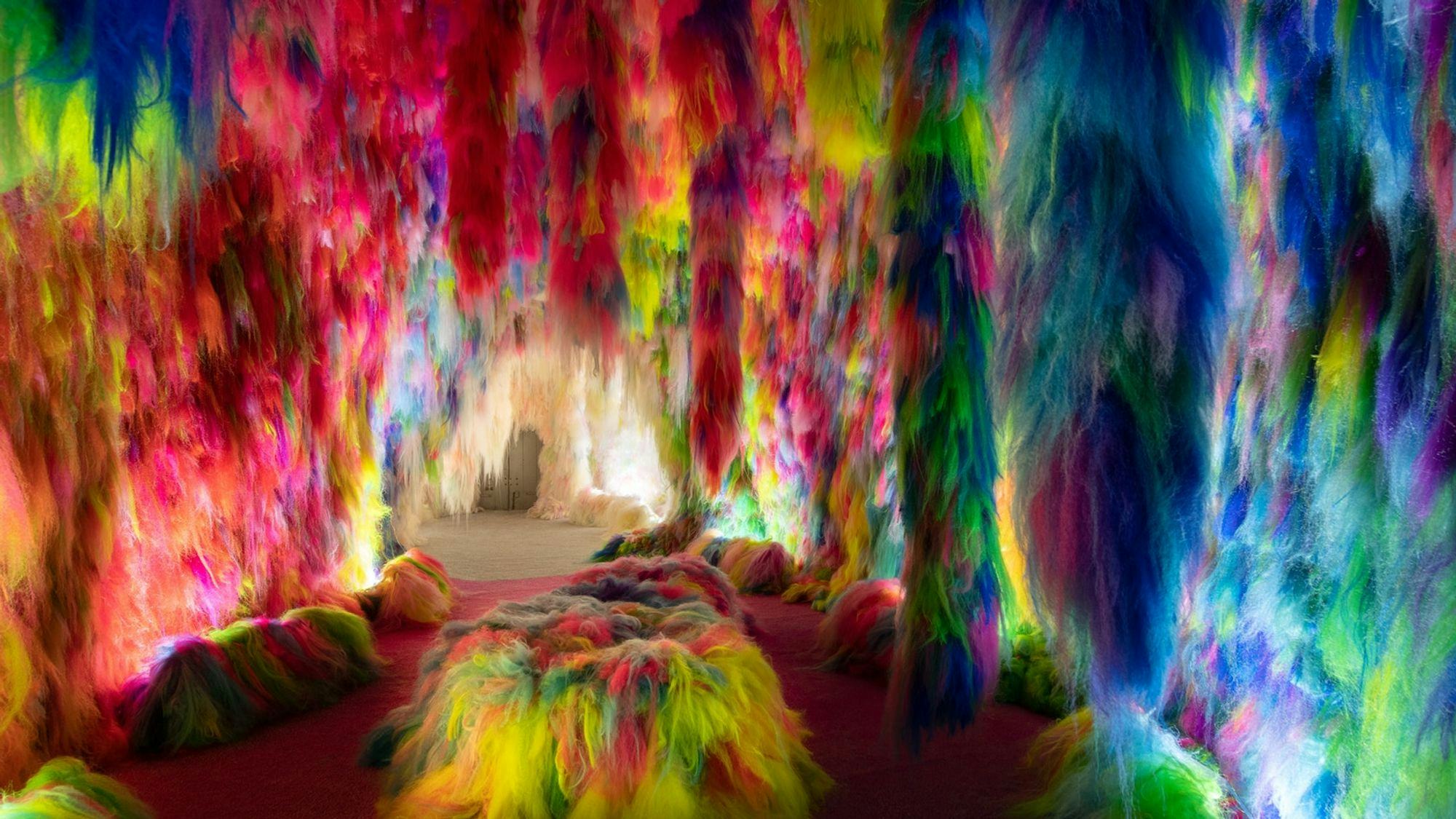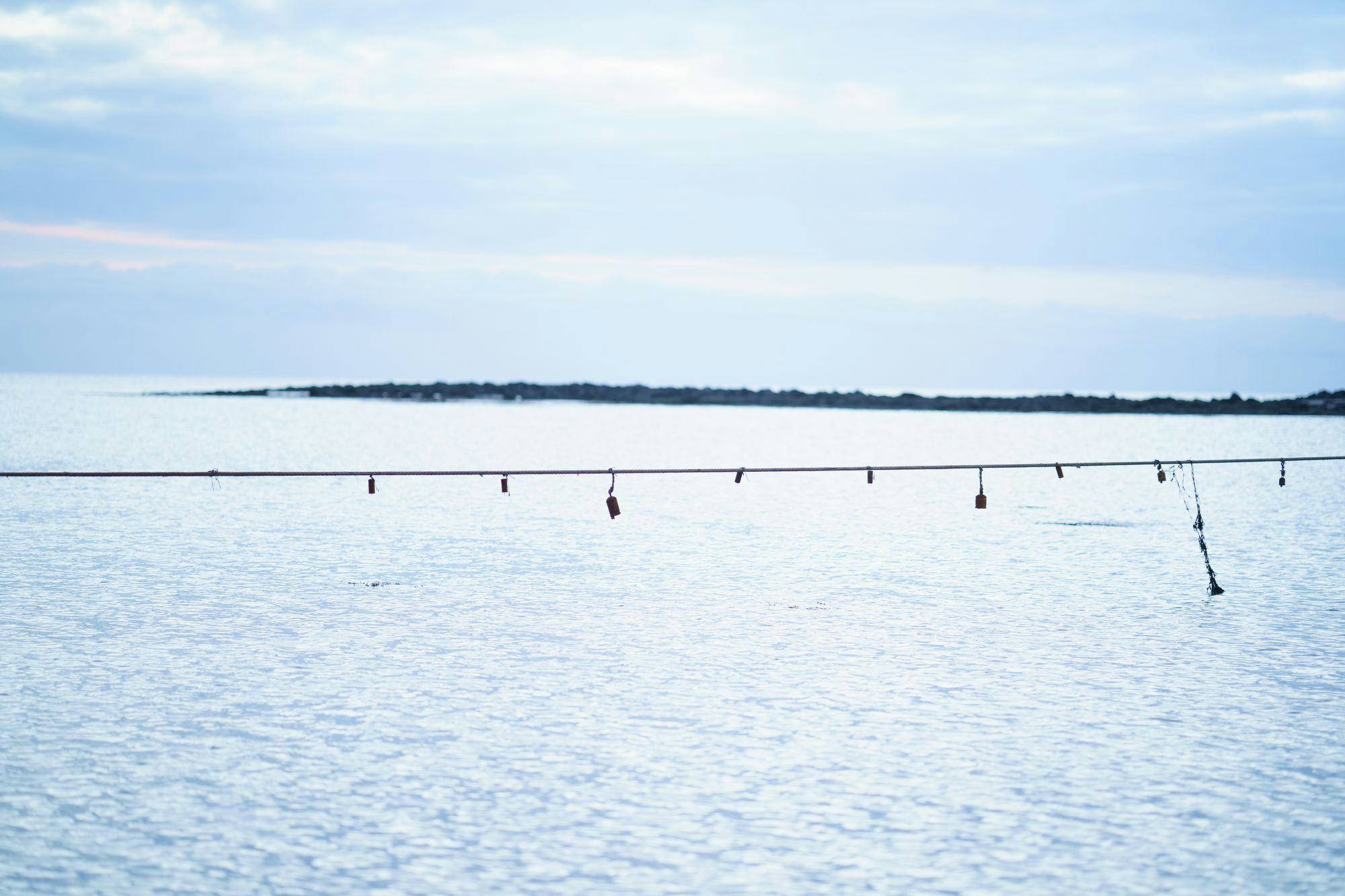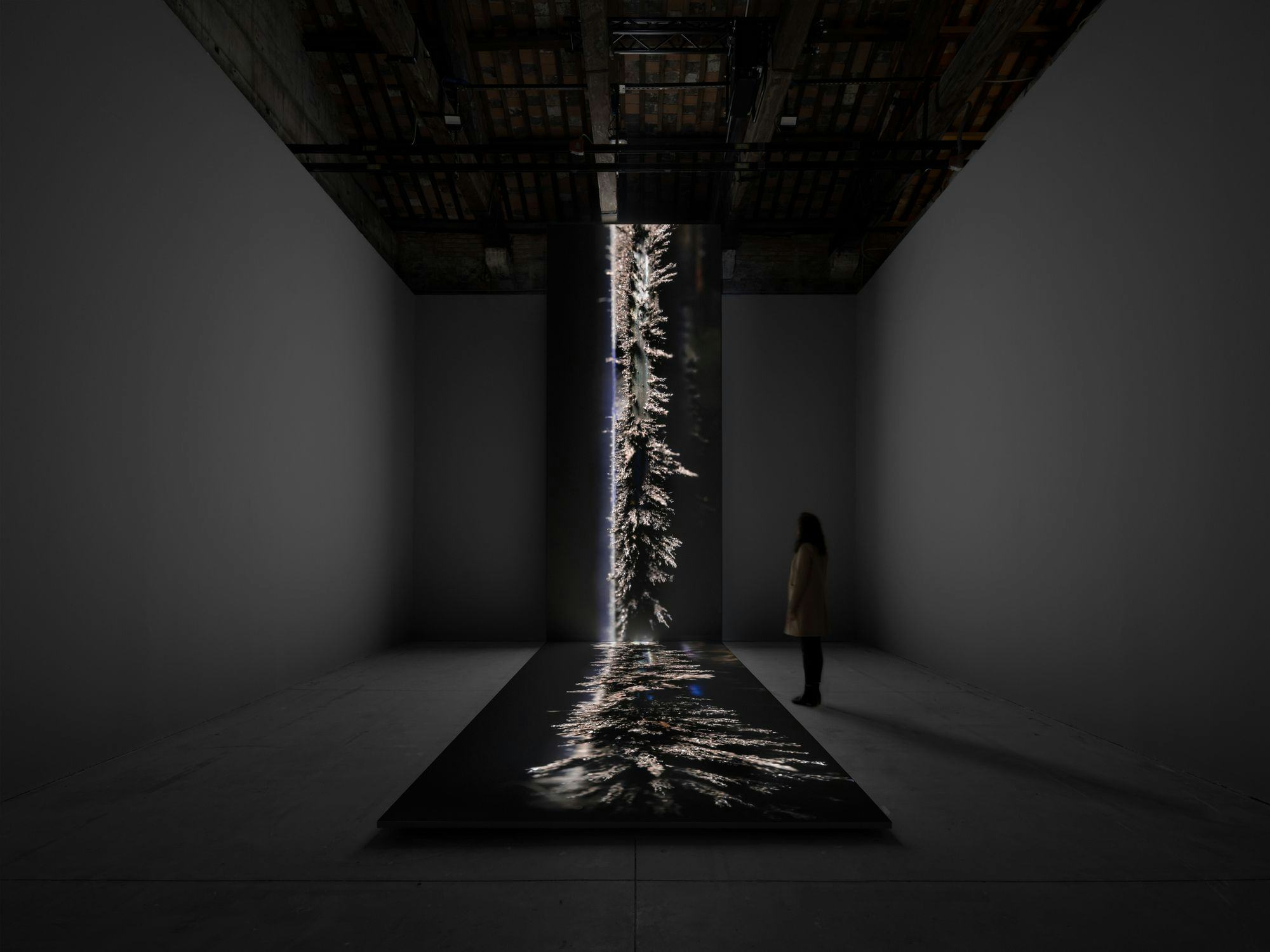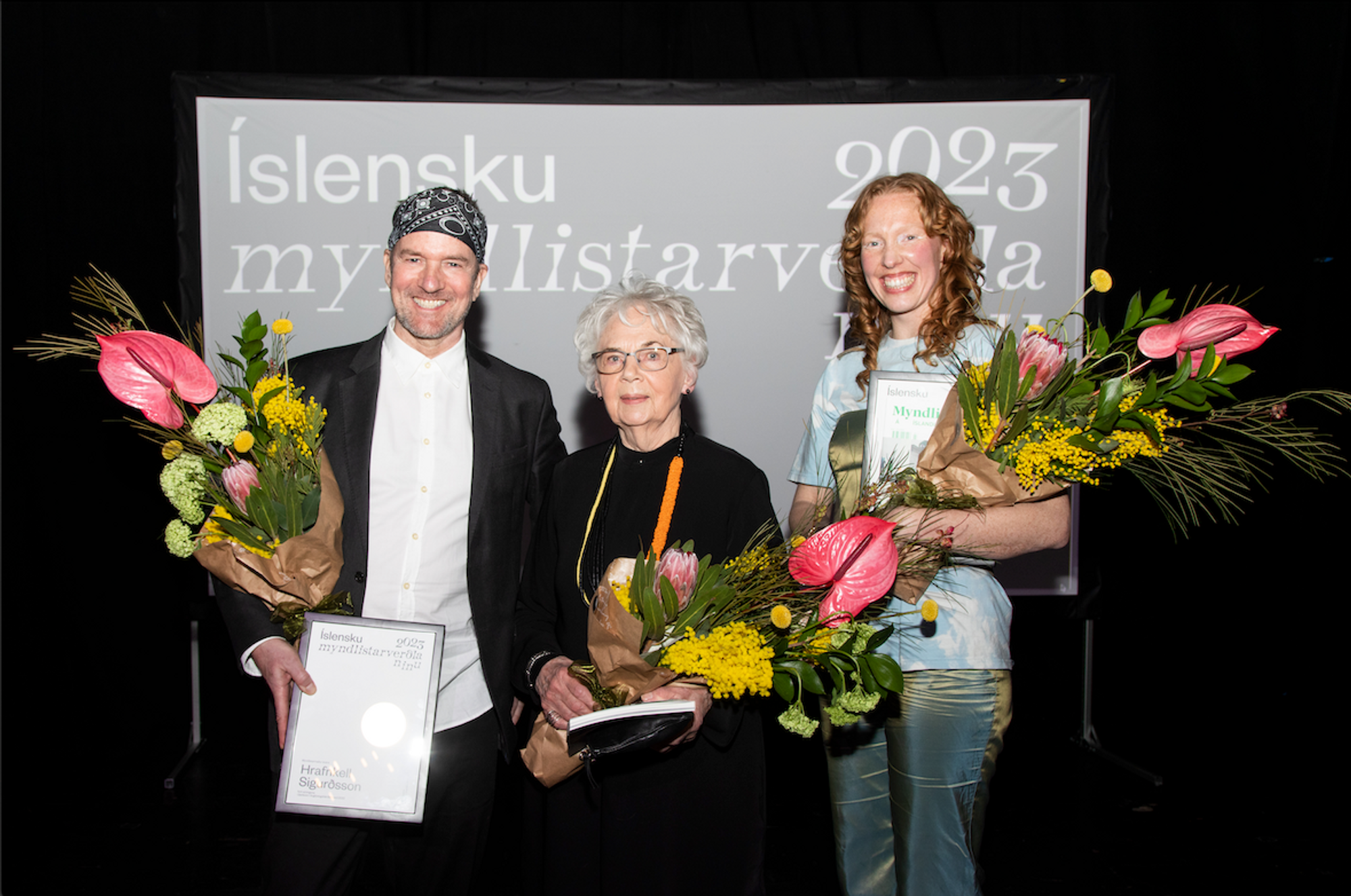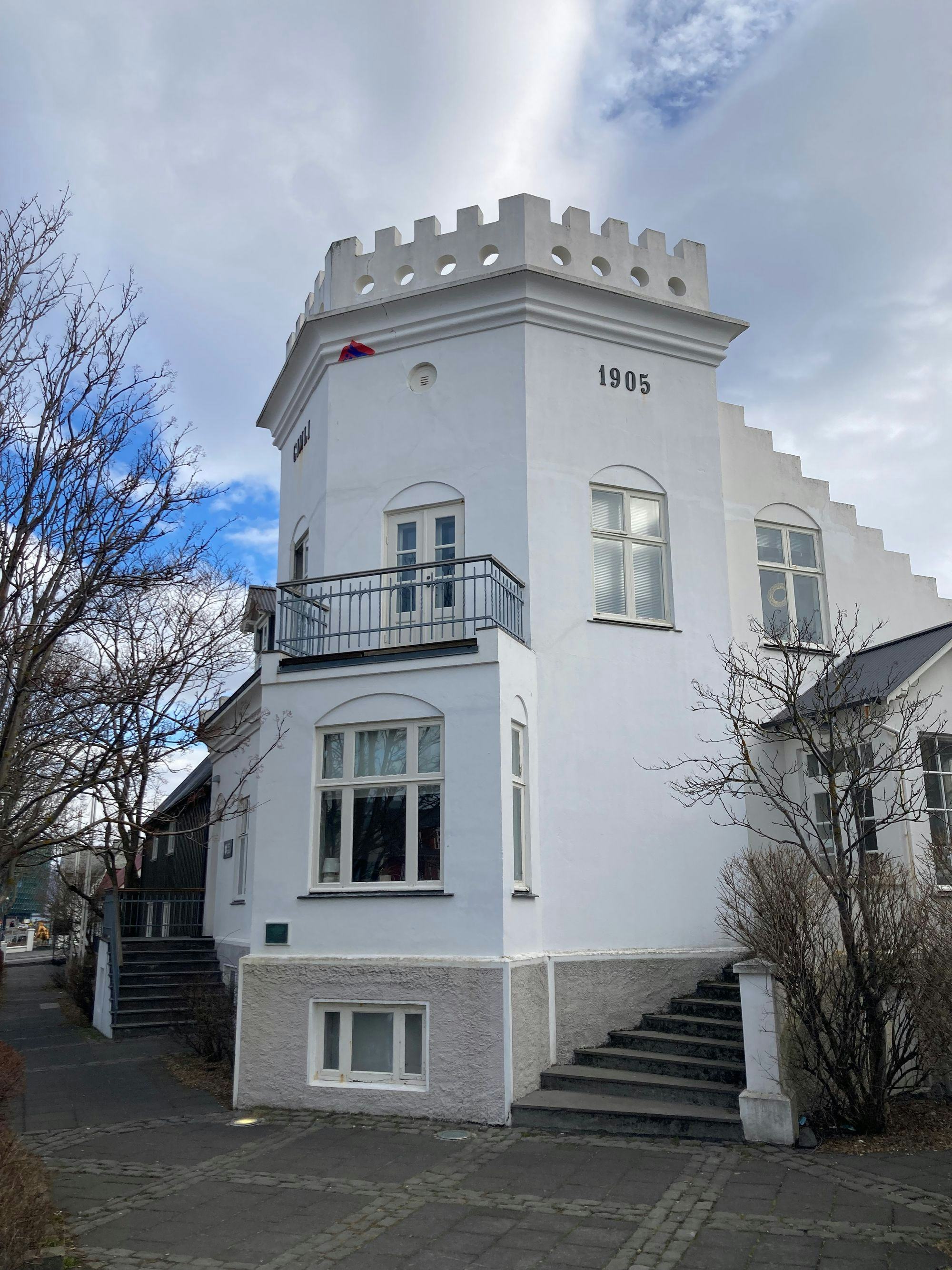Yes, a falling tree makes a sound (and it has a lot to say) at Kling and Bang
For Ursula Le Guin and others, science fiction functions as a test ground for social practice, where strange, transgressive worlds emerge in response to systemic forms of oppression. These ideas are at the forefront of an exhibition curated by Helena Aðalsteinsdóttir at Kling & Bang, ‘Yes, a falling tree makes a sound (and it has a lot to say)’. A timely show bringing together nine artists from Iceland and abroad, it uses the genre to raise important questions about representation and the future, asking what worlds we want to create beyond the limits of patriarchal and colonial power structures. These modes of critique and inclusivity are upheld alongside an informal and democratic gallery space—drink beer from an artwork in the first room or lie on the floor and enter a video game in the last. As a viewer, it’s your choice; there is a fluidity at play in experiencing the works as they oscillate between ironic alterity and a transporting, otherworldly affect.
Helena Aðalsteinsdóttir is an artist and curator based between Reykjavik and London, and we spoke via Zoom from our respective lockdown bedrooms. Discussing the above in detail, we excavate what it means to ‘curate’ and work with artists in the process.
Shall we start by talking about the transition you made from being an artist to a curator?
I think I got to the point where I was just more fascinated by other people’s stories than my own, and I thought that there were other voices that are much more urgent. I see curating as a way of gathering stories by other artists, giving them space and context where new narratives can emerge.
-4-2000x1257.jpg&w=2048&q=80)
‘Yes, a falling tree makes a sound (and it has a lot to say)’, 2021. Kling & Bang, Reykjavík.
Is the idea of a narrative exhibition something you’ve been thinking about?
I’ve thought about narrative a lot at Kling & Bang, and about how we could alter the space in small ways. The whole context of this exhibition is creating an alternative universe, inspired by my research on space creation in feminist science fiction. When you’re reading science fiction, you can be transported into another planet where creatures look very different from yourself and as with all reading, you feel yourself being immersed in another world. I’m thinking about how this can be transferred into a gallery space.
At the forefront is the idea of space travel within narrative and how that can be modified into a bodily experience, heightening the senses experienced when you walk into the gallery. Kling & Bang is such a familiar space to many people in Iceland, and I wanted to think of ways to make it feel a little bit more unfamiliar, like a guest from a different planet. We are creating hidden doors, for example, and walls that push open.
A lot of the works in the exhibitions are using different softwares and technologies, a video game for example. How do you see the potential of technology within science fiction?
Science fiction is how we imagine our future and technology helps build possible future narratives. In many of the works where technology plays a large part, it’s a really personal, spiritual approach to technology—warm tech, rather than hard or cold. Artists play with the relationship between the body and technologies or myths. In Josephine van Schendel’s work, the AI chatbot is actually Hellenistic goddesses retelling their narratives to a technology, for example. Those stories are then fed into the bot, attempting to change the narrative so that it’s not based on the typical, male-dominated storylines that we have heard in traditional mythology. Instead, we’re trying to use it to create a voice or to reawaken buried voices.
So, technology is a really big part of the exhibition, but it’s always in a dialogue with social behaviours. I don’t like to think that it’s going to take over. Technology must go together with human connection, creating a kind of speculative fiction or fabulation. Science fiction is not escapism, it’s more of an escape into reality and as such, it’s a perfect platform because it creates a space that anyone can enter on an equal basis. It’s a lot harder to talk about your lived experiences if you are a person in a marginalised group and you’re trying to explain a situation to someone who is really privileged. But in science fiction, you can create a planet where power structures are altered, so the marginalised person can be the ruler of this planet, or they can be complete equals.
Do you see this exhibition as a political project?
It is quite political, but in a really playful way. Tabita Rezaire’s work is a text message conversation where the Western world is trying to apologise for colonising and for enslaving people. For many visitors, the work is confrontational. It’s produced with neon colours in a way that is true to her style, so it’s political while being humorous and accessible.
The exhibition is also concerned with representation and that makes it political by default—eight of the nine artists are women, for example. The hierarchy is a bit different in this show than what you are used to in a cis, patriarchal and white dominated art world. It’s important to me that the works are not separate or hierarchical, so I try not to create borders between them, and a lot of the time they are bleeding into each other—they’re all having conversations with each other in the space.
-3-2000x3034.jpg&w=2048&q=80)
‘Yes, a falling tree makes a sound (and it has a lot to say)’, 2021. Kling & Bang, Reykjavík.
Let’s talk about the process of selecting the artists. Do they work together and are you forming new connections with artists that you haven’t worked with before?
Both Tabita Rezaire and Tarek Lakhrissi were artists I researched during my studies, so I’d had conversations before with them and we’ve had text message dialogues. I put the artists together because I saw that they had a lot of things in common, so it was a form of matchmaking. Then they met via email and it’s been quite an organic process. Relationships, pen pals and conversation groups have emerged from the process.
Also, I’ve been working really close with the artists, since most of them are creating new work. During the past year, they’ve been making the works for the exhibition, so I’ve been having monthly, if not more, meetings with each artist, to go through the process of making together. The step by step of following their work has been really interesting because I get to be a part of the works’ inception and construction.
In the exhibition, there are designers and artists—how important is it for you to distinguish art from other disciplines?
The borders between art and design can be as blurry as you wish, I think it all depends on the context and varying approaches. It’s a wide spectrum, and in my experience, the more you try to define art, design or the difference between them—there is never a clear answer—these fields can be wildly different or similar.
Elín Margot is a designer and artist, for example. Her work belongs in both realms, but our approach to this work she’s making for the exhibition is from an artist’s point of view. The nicest surprise is Þórey Björk Halldórsdóttir, an experienced designer and brewer, because I invited her to do the drinks for the opening, but then we had lots of conversations which lead to her creating an artwork—which I find really interesting.
Also, part of the brief I first gave the artists was an encouragement to create work that they have had in their minds but haven’t found the platform for. That has pushed people who are designers more by trade to allow those creative ideas to come forth, because you don’t really have to think about the use value or the consequences, it’s more like—if it doesn’t work, that’s fine—this is your world, create whatever you think fits in there. If the beer tastes like piss, that’s just how beer tastes on this planet! I think that really helped create interesting work, because a lot of risk taking occurred. (And by the way, the beer tastes heavenly!)
-2-2000x2995.jpg&w=2048&q=80)
‘Yes, a falling tree makes a sound (and it has a lot to say)’, 2021. Kling & Bang, Reykjavík.
What do you feel is lacking in the Icelandic art world?
The most obvious answer is that there is a lot of diversity in the Icelandic art scene, and I just don’t feel it’s being represented enough. It should be a lot more diverse, because Iceland has changed a lot. In 2009, around only 8% of the country was made up of people who were not born in Iceland, and then ten years later, it’s about 15% so it’s growing so fast. That’s not being reflected in the museums and galleries in Iceland. There definitely are some really interesting artist run spaces, but going forward only good things can come from having more platforms for a growing diversity of voices.
Perhaps we also need to be challenged more—it’s hard to have difficult conversations in Iceland because they involve such a drastic change from our usual comfort zone. For example, where I live in London, nothing is really comfortable, so you’re constantly asking questions. I’ve spent a lot of time asking myself how I can have a positive influence in the Icelandic art scene. I think this exhibition is one way I’m doing that, because it’s showcasing a diverse group of young Icelandic and international artists, together in one space. All of the artists work on the borders of reality and fiction, and a lot of the works are about how they identify in this world. It includes, for example, Brokat films, and Joanna Pawlowska, who is part of that group, is Polish and lives and works in Iceland. I thought, since Polish people are the biggest minority group in Iceland, it’s important to have their voices in this show.
Brokat films use Youtube to platform strange performance works that are somewhere between influencer parody and psychedelic animations—how did you discover them?
I discovered them through Midtpunkt because Joanna Pawlowska (who is part of duo) is a part of the team that runs the exhibition space. I saw their Youtube channel, and I was just like, ‘what is going on here?’ It doesn’t explain very much, but their vlog-style videos take you on board surreal journeys, so I sent them an Instagram message and we began a conversation.
-1-2000x3000.jpg&w=2048&q=80)
‘Yes, a falling tree makes a sound (and it has a lot to say)’, 2021. Kling & Bang, Reykjavík.
Where does your interest in science fiction come from?
I know it comes from a feeling of not belonging. Then for me, there’s the process of seeking comfort in science fiction and finding it to be a space where I can create a place for belonging, and I can read stories about the author who felt they belong there too.
The recent popularity of science fiction is also something that happens naturally, going through the pandemic, we ask: ‘what’s the future going to look like?’ There are apocalyptic feelings surfacing, or hopes for a rebirth of the earth. In terms of global warming too, we’re living in an era where the future is precarious. I feel that I really want to bring that conversation to Reykjavik.
Do you conceive of a specific experience that you want visitors to the show to have?
I would like to think that the visitor can leave with a broader idea about what the future could look like, and that they allow fantasy to come into play when they think about that future. I hope they get a deeper understanding of the lived realities of someone else other than themselves—I want to expand their perspectives and allow other realms to infiltrate their own.
–
‘Yes, a falling tree makes a sound (and it has a lot to say)’ is open at Kling & Bang from 31 March 2021. Artists included in the exhibition are Josephine van Schendel, Bára Bjarnadóttir, Tarek Lakhrissi, Brokat Films, Dýrfinna Benita Basalan, Elín Margot, Þórey Björk Halldórsdóttir and Tabita Rezarie. A publication designed by Signatura Books, features Ursula Le Guin, and a selection of artists and writers, released in early May.
-2000x1334.jpg&w=2048&q=80)
